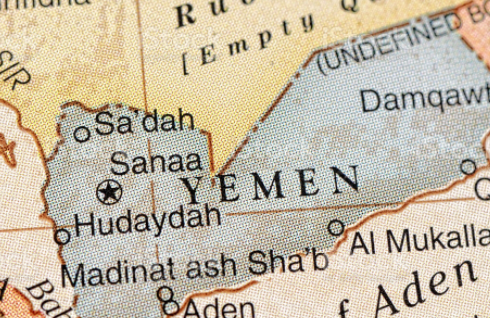|
By H. Prado Famine. Cholera. Bombings. Civil war. All of these describe Yemen’s current situation and place it at the world’s largest humanitarian crisis. The country has been described by the UN as "hanging by a thread", and more than 80% of the population needs humanitarian assistance. The conflict officially begun in 2014, but has been largely underreported and only recently gained media attention.
How did the Civil War begin? In 1990, North and South Yemen merged to create the Republic of Yemen, but with this, their problems were also merged, leading to governmental disagreement between supporters and Houthi rebels. After years of tension and protests, President Saleh resigned in 2011, and his deputy, President Abdrabbuh Mansour Hadi, took his place, but the country continued to struggle with inflation and corruption. In turn, rebels took advantage of the disorder to begin seizing territory, while part of the population supported them as they were dissatisfied with the new president. To make matters worse, with the governmental turmoil, extremist groups Al-Qaeda and Islamic State (IS) infiltrated into the South. There, they established bases and increased their influence on the Middle East. Impacts of the war In 2014, Houthi rebels took over Yemen’s capital city of Saana, officially igniting Yemen’s Civil War. Consequently, Saudi Arabia led a coalition of countries supported by the UK and the US to push rebels back. However, they also caused a fair share of damage by bombing hospitals and ports as well as creating a blockade so that supplies wouldn’t reach the Houthis. This simultaneously affected civilians due to shortage of medications, food, and fuels, leading to Save The Children’s prediction that 85,000 infants might have died from severe acute malnutrition. Additionally, this prevented human aid and UN representatives from travelling within the country, so people in need were not assisted, and the broadcasting of the situation to the rest of the world was hampered. This lack of monitoring from humanitarian services is also believed to have increased child marriage rates and the use of child soldiers in the war. Furthermore, it is assumed that 36 attacks by the Saudi Arabian coalition violated international war laws; they used an illegal type of bomb known as ‘cluster munitions’, which releases dozens of smaller bombs that take a while to explode so continue to impact civilians after the initial attacks. These supplies have been sold to the coalition by the US, UK and even by Brazil, contributing to many civilian casualties. Also, the UK and US are being accused of profiting as a result of the war, with New York Times statistics that there were sales of "60,000 precision-guided munitions to Saudi Arabia… in deals worth billions of dollars". Additionally, 7.8 million children are out of school being ‘robbed of their futures’ and There are over 1 million suspected cases of cholera and citizens are experiencing the world’s worst famine in 100 years. This creates the ‘perfect storm’ and ‘an emergency within an emergency’ for coronavirus transmissibility, especially since half of the country’s healthcare services have been destroyed. There is no way to know how many cases there are, but according to The Economist, there are cities where ‘gravediggers work overtime to keep up with the dead.’ How to help Considered the worst humanitarian crisis in the world, Yemen is clearly in need of aid. Donations to Support War Child, an international charity which works to distribute food and has petitions to stop the selling of arms, would benefit the country immensely as it tries to rise from this crisis.
0 Comments
Your comment will be posted after it is approved.
Leave a Reply. |

